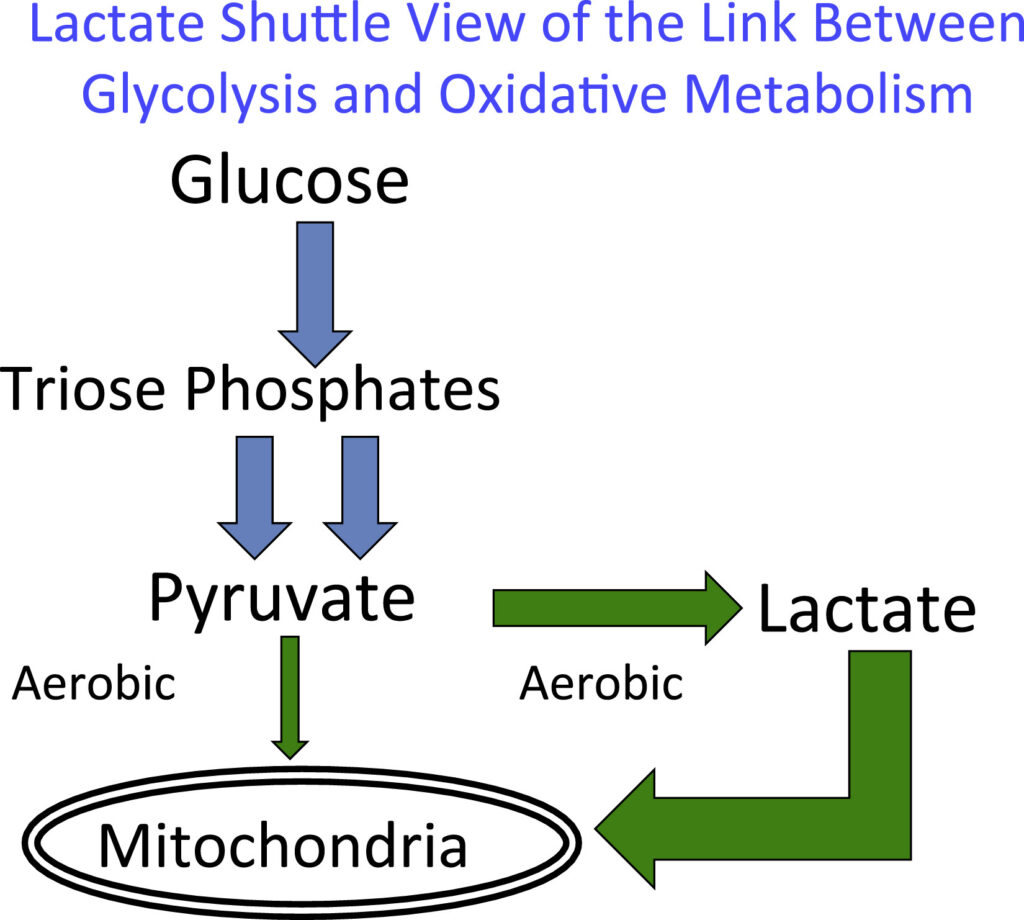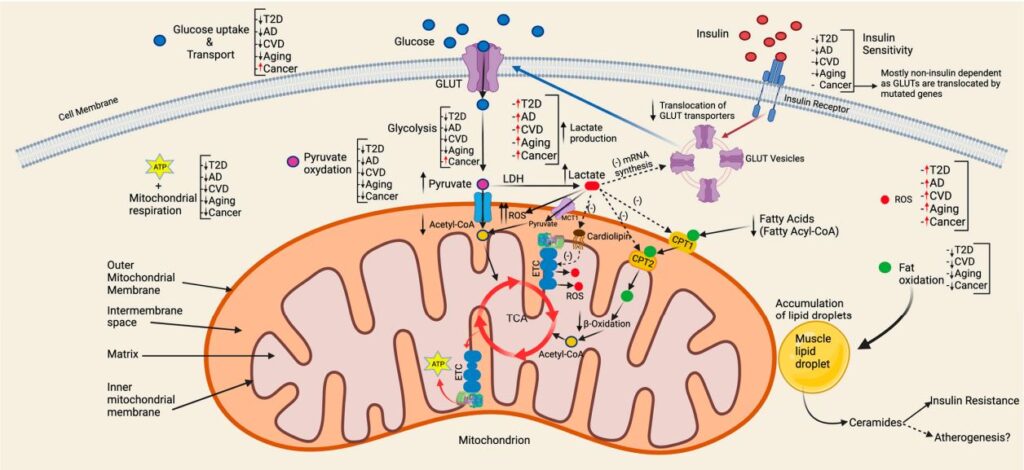Skeletal muscle lipid paradox – “A significant histological finding pertaining to skeletal fat metabolism occurs in physically fit individuals as well as in individuals with T2D, where both populations show an accumulation of intramuscular triglycerides. as both physically fit individuals as well as individuals with T2D are characterized by the presence of a “lipid droplet” adjacent to mitochondria.” – Inigo San-Millan1
For the extraordinarily metabolically fit individuals the fat droplet is carried by the mitochondria like a backpack. This lipid serves to “prime the pump” for fueling exercise. This lipid serves as a significant source of fat oxidation during exercise.
For those with type 2 diabetes, that same lipid molecule found attached to the mitochondria is composed of ceramides that are involved in skeletal muscle insulin resistance and mitochondrial dysfunction. Ceramides are key players in the development of atherosclerosis (plaque build up in arteries) and a biomarker of insulin resistance.
Cardiometabolic disease and Type 3 diabetes
Having type 2 diabetes places you at a 1.5-2 fold increased risk of developing cardiovascular disease. These diseases are closely linked. The term cardiometabolic disease is has thus been established.
This study2 found that 81% of patients with Alzheimer’s disease had type 2 diabetes or impaired fasting glucose; meaning, metabolic disease can affect the brain too. The brain favors glucose and lactate as fuel when bioenergetics are disrupted it impairs brain health. Both mitochondrial dysfunction and insulin resistance are the two main hallmarks of those with Alzheimer’s disease. The term type 3 diabetes has emerged to describe this problem.
The lactate shuttle theory
George Brooks mentions on the Peter Attia podcast that: “We’ve been teaching glycolysis wrong for a hundred years.” What he means is that glycolysis produces lactate, not pyruvate. This lactate, once thought of as a pesky waste product that needed to be immediately shuttled to the liver via blood to be transformed back into glucose is incorrect. Under fully aerobic conditions glycolysis produces lactate3. That lactate is then transferred to the nearby mitochondria to be used as a fuel source.

Lactate (obligatory byproduct of glycolysis) is shuttled from fast twitch muscle fibers to the mitochondria of slow-twitch muscle fibers for metabolism via the lactate oxidative complex (mLOC) to create ATP.
The brain has it’s own version of this termed the astrocyte-neuron lactate shuttle. Lactate generated in the brain is shuttled from astrocytes to be metabolized in the mitochondria of neurons.
1. San-Millán I. The Key Role of Mitochondrial Function in Health and Disease. Antioxidants (Basel). 2023;12(4):782. Published 2023 Mar 23. doi:10.3390/antiox12040782
2. Janson J, Laedtke T, Parisi JE, O’Brien P, Petersen RC, Butler PC. Increased risk of type 2 diabetes in Alzheimer disease. Diabetes. 2004;53(2):474-481. doi:10.2337/diabetes.53.2.474
3. Brooks GA. The Science and Translation of Lactate Shuttle Theory. Cell Metab. 2018;27(4):757-785. doi:10.1016/j.cmet.2018.03.008

